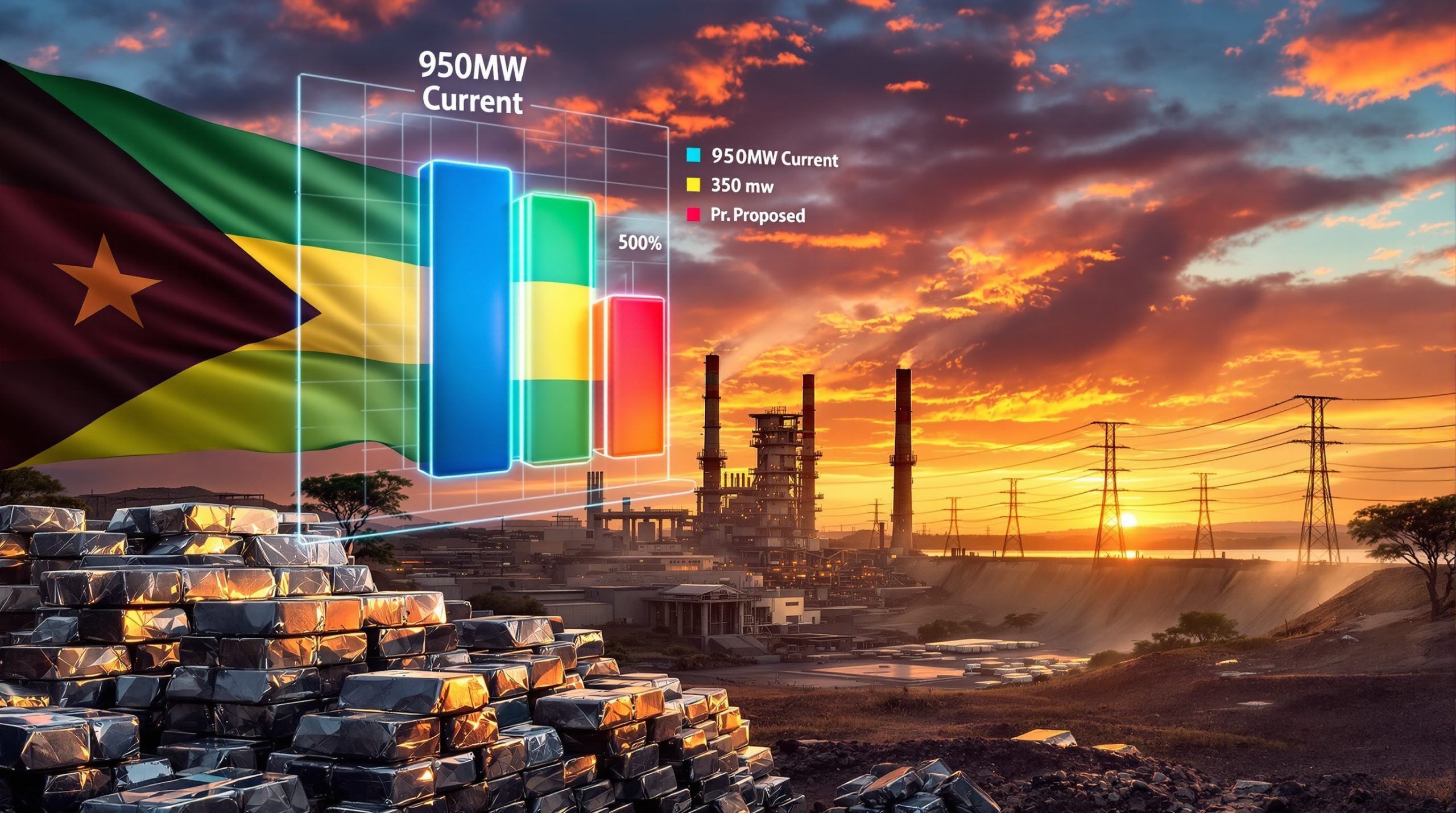What Is Driving the Current Market Chaos?
Financial markets are experiencing unprecedented turbulence as several systemic forces converge, creating what many experts describe as a perfect storm of economic disruption. Understanding these complex dynamics is essential for investors navigating today's volatile landscape.
Ray Dalio's Warning of Systemic Breakdown
Legendary investor Ray Dalio has issued a stark warning that the current market chaos is "just the beginning of something far more devastating." His analysis identifies five converging existential threats that threaten global economic stability.
"We're seeing a classic breakdown of the major monetary, political, and geopolitical orders," Dalio cautions, highlighting a debt-riddled monetary system teetering on the edge of failure. The U.S. national debt has surged to an astounding $34.5 trillion in 2024, with debt-to-GDP ratios exceeding 120% – levels historically associated with significant financial stress.
Dalio's concerns extend beyond just monetary issues to include fracturing democracies under extreme inequality, America's waning global dominance, escalating natural disasters, and technological disruption rewriting economic rules. Perhaps most tellingly, he dismisses recent tariff escalations as "merely surface symptoms of deeper rot within global systems."
The Bridgewater Associates founder, who manages one of the world's largest hedge funds, has consistently positioned his portfolio to withstand systemic shocks, notably maintaining approximately 8% allocation to gold – significantly higher than traditional portfolio models suggest.
Geopolitical Tensions and Trade Policies
Recent policy developments have added fuel to market uncertainty. Former President Trump ordered an investigation into imposing tariffs on critical minerals under Section 232 of the Trade Expansion Act of 1962 – a rarely used provision that allows tariffs for national security concerns.
This investigation specifically targets minerals like cobalt and rare earths, coming after China's restrictions on exports of these materials. With China controlling approximately 80% of global rare earth production, this move aims to reduce U.S. vulnerability and expedite domestic mining development.
The implications are already being felt across industries. Alcoa, America's largest aluminum producer, disclosed a $20 million financial hit from Trump's 25% metal import tariffs. The company's CEO warned these measures could ultimately put approximately 100,000 American jobs at risk, highlighting the double-edged nature of protectionist policies.
Market analysts point to Trump's "Liberation Day" tariff announcement on April 2nd as a pivotal moment that damaged the dollar's status as the world's reserve currency. Since that declaration, traditional market correlations have broken down, signaling potentially structural shifts in global commodities insights.
Why Are Gold Prices Surging to Record Highs?
As traditional markets face turmoil, precious metals – particularly gold – have emerged as preferred safe havens for investors seeking stability and preservation of wealth.
Current Gold Price Performance
Gold has climbed above $3,300 per ounce, representing a remarkable 65% increase from approximately $2,000 per ounce in January 2024. This extraordinary rally remains heavily supported by a broadly weaker dollar and persistent economic uncertainty.
The uncertainty surrounding tariff announcements continues fueling price increases, while fears about a potential global recession drive safe-haven buying. According to Luke Menotunga, senior research analyst at FXTM, "By $3,300, it's all about psychological levels for gold prices" – suggesting that market sentiment, rather than fundamental factors alone, is propelling the precious metal higher.
What makes this rally particularly notable is that it's occurring alongside substantial purchases from central banks, who acquired 1,136 tonnes of gold in 2023 according to the World Gold Council – representing the highest level of institutional accumulation in decades. This trend suggests a fundamental reshaping of monetary reserves globally.
Expert Gold Price Projections
Investment banks and analysts have scrambled to revise their forecasts upward as gold continues its ascent. Goldman Sachs has upgraded its gold market trends forecast three times this year, now projecting $4,000 per ounce by mid-2026 – a target that seemed extreme just months ago but appears increasingly plausible.
A recent Bank of America survey found that 42% of fund managers expect gold to outperform all other asset classes in 2025, highlighting the shifting sentiment toward hard assets amid currency instability.
Daniel Oliver of American Research offers a historical perspective: "At $3,200 per ounce, gold represents 12.4% of the Federal Reserve's assets, which is below the 12.9% reading from 1971 when gold traded at just $37.40 per ounce." This comparison suggests that despite reaching record nominal prices, gold "remains cheap in US terms" relative to the expansion of central bank balance sheets.
Gold's Sharpe ratio (a measure of risk-adjusted returns) has outperformed the S&P 500 by 2:1 in 2024, attracting investors seeking both performance and stability in uncertain times.
How Is the Dollar's Dominance Being Challenged?
The U.S. dollar has long held the privileged position as the world's reserve currency, but recent developments suggest this dominance faces unprecedented challenges.
Shifting Currency Dynamics
Though volatility in global markets over the past two weeks has shown signs of subsiding, the damage to dollar confidence appears more lasting. Trump's aggressive tariff agenda has significantly undermined the dollar's status as a go-to currency for international trade and reserves.
The dollar index has sunk to its lowest level in three years, falling more than 9% from its January high – a dramatic decline for the world's primary reserve currency. This weakening has accelerated markedly since the April 2nd tariff announcement, which many analysts identify as a turning point in market sentiment.
Perhaps most concerning for dollar advocates is the breakdown of traditional market correlations. The historical relationship between dollar strength and Treasury yields has fractured, suggesting deeper structural concerns about America's fiscal trajectory and global leadership.
Alternative Currencies Gaining Strength
As the dollar weakens, alternative currencies have strengthened considerably. The Japanese yen, Swiss franc, and euro have gained 5-7% against the dollar following the tariff announcements, reflecting a diversification away from dollar-denominated assets.
Steve Englander at Standard Chartered observes that "the market clearly has doubts now" about the long-term stability of dollar-based systems. This sentiment is echoed by Thei Wisman, strategist at Machi Group, who noted: "The US is no longer the underwriter of its own system. Instead, the US is going about dissembling that system in a non-diplomatic and abrupt way."
Global institutions increasingly view gold as a hedge against a world where traditional currency relationships are being redefined. The Swiss National Bank's substantial gold purchases (approximately 120 tonnes in 2024) exemplify this institutional shift toward hard assets.
BRICS nations have accelerated de-dollarization efforts, with China's RMB usage in commodity trades reportedly rising to 20% in 2024 according to People's Bank of China data. Though any shift from dollar dominance will not happen overnight, the acceleration of these trends bears close monitoring.
What's Happening in the Gold Mining Sector?
The gold mining industry stands at a pivotal juncture, with major producers and junior explorers both experiencing significant transformations amid record gold prices.
Major Producers Performance
Gold producers have surged in recent sessions, with the GDX mining index breaking through decade-long resistance levels after rising approximately 40% year-to-date. This performance reflects both higher gold prices and improved operational efficiencies across the sector.
However, geopolitical challenges remain prevalent. Barrick Gold's Loulo-Gounkoto complex in Mali is facing significant disruption after Malian authorities shut down the company's office over alleged tax non-payment. This operation produced nearly 700,000 ounces of gold in 2023, representing 14% of Barrick's total output.
The Mali situation highlights the jurisdictional risks in mining stocks guide even for established operators. Barrick has invested over $10 billion in the project, which contributes up to 10% of Mali's annual GDP (approximately $700 million). Despite this economic significance, Barrick is transferring key staff to its Kibali mine in the Democratic Republic of Congo, suggesting operations may remain suspended indefinitely.
What makes the Mali deposits particularly valuable is their exceptional grade – approximately 4.5g/t ore compared to the global average of 1.5g/t – making this disruption especially costly at current gold prices.
Junior Exploration Sector Revival
After years of underperformance, the junior exploration sector is finally showing signs of life. The S&P TSX Venture Gold Index has broken out of a decade-long base pattern, though the broader TSX Venture Index remains below multi-year highs, indicating that enthusiasm remains somewhat selective.
Ascot Resources exemplifies this revitalization, targeting August for a return to production at its Premier Gold Project in British Columbia. The company has secured over C$61 million in financing and is addressing power capacity issues with a new transformer.
The historic significance of this project adds to its appeal – Premier was once North America's largest gold mine, producing 2 million ounces between 1918-1952. Ascot plans to restart the mill at 1,250 tons per day, increasing to 2,500 tons by 2026, though shares fell 5.3% following this announcement, reflecting the ongoing challenges junior miners face despite favorable gold prices.
The junior mining sector's adoption of renewable energy technologies, such as solar-hybrid systems similar to those deployed at larger operations like Kibali, represents an important operational innovation that may improve project economics amid rising energy costs and ESG pressures.
What Does This Mean for Investors?
The convergence of dollar weakness, gold strength, and broader market uncertainty creates both challenges and opportunities for investors seeking to preserve and grow capital.
Safe Haven Investment Strategies
Gold is increasingly viewed as protection against monetary system failures rather than just inflation. Its traditional role as a portfolio diversifier has expanded, now providing an alternative to treasury bonds that may face their own challenges in a rising rate environment or during debt ceiling crises.
Ray Dalio has "previously and consistently said that gold is positioned to thrive amid the coming chaos" – a perspective increasingly embraced by mainstream financial institutions. Portfolio optimization models now frequently recommend 5-10% gold allocation, up from the traditional 2-5% suggested in previous decades.
Daniel Oliver notes that gold "remains cheap in US terms" despite recent price increases, particularly when measured against the expansion of central bank balance sheets and total financial assets. This perspective provides context for why institutional investors continue accumulating even at record nominal prices.
The role of mining stocks within a gold-focused portfolio deserves special consideration. While physical gold offers pure exposure to price movements, mining companies provide operational leverage that can amplify returns during rising price environments. However, this comes with added jurisdictional, operational, and management risks, as illustrated by Barrick's Mali challenges.
Tesla's reported $1 billion gold-backed bond issuance for raw material hedging demonstrates how even non-traditional gold investors are seeking exposure to the metal as both inflation protection and supply chain security. Understanding various gold ETF strategies can be valuable for investors looking to gain exposure to the precious metal.
Gold Price Performance vs. Dollar Index
| Metric | January 2024 | Current | Change |
|---|---|---|---|
| Gold Price | ~$2,000/oz | $3,300+/oz | +65% |
| Dollar Index | January high | 3-year low | -9% |
| GDX Mining Index | Below resistance | Breaking decade-long resistance | Significant increase |
This table illustrates the inverse relationship between dollar strength and gold prices, with the mining index providing a leveraged play on this dynamic. Investors seeking to capitalize on these trends must consider not only direct exposure to gold but also the relative merits of physical ownership, ETFs, mining majors, and exploration companies.
FAQs About Gold and Market Chaos
Is gold still a good investment at current price levels?
Despite reaching $3,300 per ounce, experts suggest gold may still be undervalued relative to historical measures. Daniel Oliver of American Research points out that gold represents 12.4% of Federal Reserve assets, below the 12.9% reading from 1971, indicating it "remains cheap in US terms." Investors should consider gold as part of a diversified portfolio, particularly as a hedge against ongoing currency debasement and geopolitical instability.
How are tariffs affecting US companies?
Alcoa, America's largest aluminum producer, has already disclosed a $20 million financial hit from Trump's 25% metal import tariffs, demonstrating concrete impacts on American businesses. Alcoa's CEO warned these tariffs could put approximately 100,000 American jobs at risk. Gold prices and market chaos have created additional complications, with supply chain disruptions and increased input costs emerging as significant challenges across manufacturing sectors, potentially offsetting any benefits intended for domestic producers.
What are the long-term implications for the US dollar?
While any shift from dollar dominance will not happen overnight, experts like Thei Wisman believe this situation "feels different" as "the US is no longer the underwriter of its own system." The dollar has already fallen more than 9% from its January high, suggesting a potential long-term shift in currency dynamics. According to Reuters analysis, central banks globally are diversifying reserves, with gold purchases at multi-decade highs – a trend that bears close monitoring for investors with dollar-denominated assets.
Disclaimer: This article contains analysis and speculation about financial markets and should not be considered investment advice. All investments involve risk, and past performance is not indicative of future results. Consult a qualified financial advisor before making investment decisions.
Searching for Investment Protection During Market Chaos?
Discover how investors are navigating these turbulent times with real-time alerts on significant mineral discoveries through Discovery Alert's proprietary Discovery IQ model, offering actionable insights for both short-term traders and long-term investors seeking to capitalise on opportunities ahead of the market. Explore why major mineral discoveries can lead to substantial returns by visiting the Discovery Alert discoveries page today.




